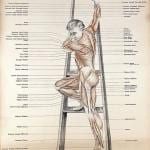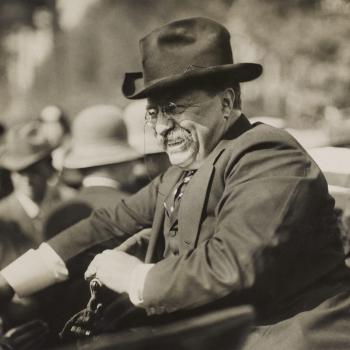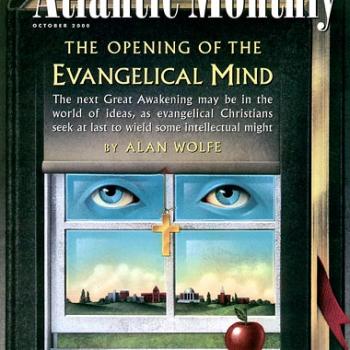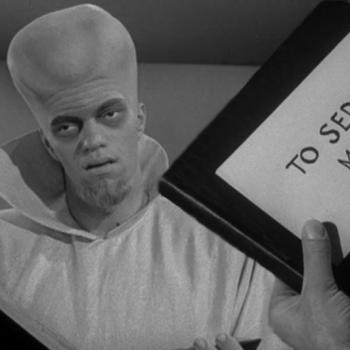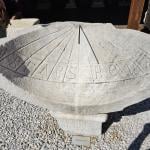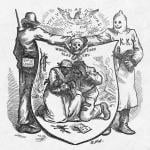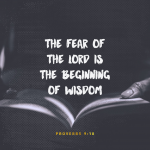What if evangelicalism only began in the 1940s with the fame Billy Graham acquired, which observers in turn translated into a religious movement?
The theological critiques and historical soul searching of the 1990s raised important questions about how to fix evangelicalism. For some like Wells the solution resides in more and better doctrine. For others like Noll evangelicalism needs to abandon restrictive and simplistic theological formulas. Greater zeal and faithfulness, along with greater discernment about evangelicalism’s recent past are also factors some believe crucial to the movement’s recovery. The one response that few have considered is perhaps the most radical and it is the point of this book. Instead of trying to fix evangelicalism, born-again Protestants would be better off if they abandoned the category altogether. The reason is not that evangelicalism is wrong in its theology, ineffective in reaching the lost, or undiscerning in its reflections on society and culture. It may be but these matters are beside the point. Evangelicalism needs to be relinquished as a religious identity because it does not exist. In fact, is it the wax nose of twentieth-century American Protestantism. Behind this proboscis that has been nipped and tucked by savvy religious leaders, academics and pollsters is a face void of any discernible features. The non-existence of an evangelical identity may prove to be, to borrow a phrase from Mark A. Noll, the real scandal of modern evangelicalism. For despite the vast amounts of energy and resources expended on the topic, and notwithstanding the ever growing literature on the movement, evangelicalism is little more than a construction. This book is a work of deconstruction.
Of course, the assertion that evangelicalism is largely a constructed ideal without any real substance is highly debatable. Part of what makes such a point contested is almost sixty years of publications, organizations, and Protestant leaders from an evangelical perspective, cheerleading for the cause. How can anyone reasonably state that evangelicalism is the creation of certain beholders’ imaginations when magazines such as Christianity Today and Books & Culture, schools such as Wheaton College, Trinity Evangelical Divinity School, and Fuller Seminary, and organizations such as the National Association of Evangelicals and the Billy Graham Evangelistic Association not only exist but thrive? If evangelicalism is not the best way to describe these institutions, some may ask, then what is? What is more, if these agencies are evangelical then evangelicalism, ipso facto, must be real; it must stand for a certain strand of Christian faith and practice.
Another factor that makes questioning evangelicalism’s reality difficult is the large number of North Americans who regard themselves as evangelical. In 1976, the so-called “Year of the Evangelical” (another indication of something really there), the Gallup Organization started asking respondents the following question: “would you describe yourself as a ‘born-again’ or evangelical Christian?” The initial response from the 1,000 Americans surveyed was an impressive 34 percent. Since then the annual responses have varied, with 1987 representing the low point (33 percent) and 1998 the high (47 percent). The responses from the 2001 survey yielded a still sturdy figure of 40 percent of Americans who considered themselves to be evangelical. Scholars of American religion, never slow to spot a trend, have picked up on such statistics to churn out a remarkable range of studies devoted to this sizeable segment of the American population. Religious historians, for instance, have charted the fortunes of evangelicalism since its emergence in the eighteenth-century North American British colonies. Meanwhile, sociologists of American religion have documented recent manifestations of evangelical zeal in electoral politics as well as everyday domestic life. So again, readers could well ask, before donating this book to the local public library’s annual book sale, who would be so foolish as to challenge so many signals indicating the existence and vitality of this religious phenomenon called evangelicalism?
Yet, the central claim [here] is precisely to question the statistics and scholarship on evangelicalism. The reason is not simply to be perverse or provocative. Good reasons exist for raising questions about whether something like evangelicalism actually exists. In the case of religious observance, evangelical faith and practice have become increasingly porous, so much so that some born-again Christians have left the fold for more historic expressions of the Christian faith, such as Roman Catholicism, Eastern Orthodoxy, and Anglicanism. At the same time, in the sphere of religious scholarship, evangelicalism has become such a popular category of explanation that it has ceased to be useful.
Better reasons, however, may also be offered for looking behind the evangelical facade to see what is really there. …Evangelicalism has been a religious construction of particular salience during the late twentieth century. The general contractors in building this edifice were the leaders of the 1940s neo-evangelical movement who sought to breathe new life into American Christianity by toning down the cussedness of fundamentalism while also tapping conservative Protestantism’s devotion and faith. Yet, without the subcontractors in this construction effort, the neo-evangelical movement would have frayed and so failed much quicker than it did. The carpenters, plumbers, and painters in the manufacturing of evangelicalism have been the historians, sociologists and pollsters of American religion who applied the religious categories developed by neo-evangelicals to answer the questions their academic peers were asking about Protestantism in the United States. The emergence of evangelicalism as a significant factor in American electoral politics did not hurt these efforts and, in fact, may have functioned as the funding necessary for completing the evangelical edifice. Especially after the election of Ronald Reagan as President in 1980 and the formation of the so-called Religious Right, religious leaders and religion scholars had a much easier time than before convincing skeptical academics, policy wonks, publishers and pundits that evangelicalism was a given of American life, a thriving movement, and therefore important.
Consequently, evangelicalism as the term is used is a construct developed over the last half of the twentieth century. Prior to 1950 the word had not been used the way religious leaders and academics now use it. And even then it was not a coherent set of convictions or practices. For that reason its construction is as novel as it is misleading. This book offers an explanation of why evangelicalism as currently used became a useful category for journalists, scholars and believing Protestants. But it is more than simply an account of a specific word’s usage. It is also an argument about the damage the construction of evangelicalism has done to historic Christianity. As much as the American public thinks of evangelicalism as the “old-time religion,” whether positively or negatively, this expression of Christianity has severed most ties to the ways and beliefs of Christians living in previous eras. For that reason, it needs to be deconstructed. (Deconstructing Evangelicalism)


